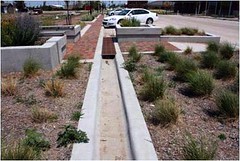Does the sustainable communities agenda have something to offer rural America?

Posted December 7, 2011 at 1:31PM
Much of the thinking among those of us concerned with how to accommodate a growing US population in a sustainable way focuses on our metropolitan regions – our bigger cities and suburbs. Indeed, that is such a significant part of my own work and writing that my editors at The Atlantic Cities have started characterizing me as an “urban wonk.” Might as well wear the label with pride, since my credentials as, say, “guitar wizard” or “cycling champion” are, shall we say, somewhat less well established.
But there’s another side to this, one that I touched upon in yesterday’s post about land conservation: what about rural communities? Can we have resilient and sustainable economic development, patterns of living and, in some cases, growth in our smaller towns and villages?
My answer is yes, as I wrote earlier this year in a short essay about the interdependence of a healthy rural landscape and healthy rural towns, using Maryland’s Eastern Shore as my frame. But, as I also wrote in an earlier series last year, getting to yes, as they say, is not so easy: one of the particular challenges to maintaining healthy rural communities is that, to a distressing degree, their traditional centers – the “there” there – have been disinvested every bit as much as the centers of our large cities. Many of them are suffering population loss, just as our central cities did before they began rebounding in the last decade. This can sometimes result in an almost desperate attempt to chase growth and development – any kind of growth and development, no matter what the long-range consequences may be, in search of near-term jobs and revenue.
 It’s hard to blame them, of course, given the challenges rural towns face and the state of the rural economy. But there’s a better way: my friend Chuck Marohn is essentially making a career of helping towns address their needs with a more economically prudent approach that stresses reinvestment in existing assets rather than development requiring infrastructure expansion.
It’s hard to blame them, of course, given the challenges rural towns face and the state of the rural economy. But there’s a better way: my friend Chuck Marohn is essentially making a career of helping towns address their needs with a more economically prudent approach that stresses reinvestment in existing assets rather than development requiring infrastructure expansion.
A new report from our friends at the federal Partnership for Sustainable Communities – the Environmental Protection Agency and the Departments of Transportation and Housing and Urban Development – makes a strong case that Chuck is on the right path. Moreover, the report demonstrates that in many cases the road to resiliency can be assisted by strategically invested public funds, where the communities seek them. The report, Supporting Sustainable Rural Communities, was produced by the three Partnership agencies in cooperation with the Department of Agriculture.
The report echoes my belief in the interdependence of landscape and town:
“Many rural communities were built around main commercial streets and relatively compact, walkable neighborhoods, along with valuable infrastructure that served their civic, cultural, and social needs. The working lands surrounding the towns often provided the reason for their existence, and continue to do so in many places. The rural landscape is more than attractive vistas—it is integral to the social and economic life of the community.”
It also takes note of the many and diverse challenges that face rural communities and economies today, alongside an array of potential solutions, including not just investment in Main Streets,  village centers, and walkable neighborhoods but also such innovative approaches to economic development as renewable energy production. Each community presents a distinct situation, but one of the keys is to maintain the rural character that residents value.
village centers, and walkable neighborhoods but also such innovative approaches to economic development as renewable energy production. Each community presents a distinct situation, but one of the keys is to maintain the rural character that residents value.
Supporting Sustainable Rural Communities details the four federal agencies’ own programs that help communities pursue economic development, strengthen traditional town centers and neighborhoods, improve walkability while expanding transportation choices, and expand affordable housing. In this sense the report might serve as a useful introduction to the menu of federal resources available to help community leaders pursue sustainability.
Most interesting to this reader, though, are the case studies describing how specific communities have been able to leverage federal support to pursue needed improvements. Some of these (three of which I have profiled in the past) include, for example:
- Lake Village, Arkansas (historic preservation to support downtown revitalization)
- Waverly, Iowa (planning assistance to support disaster resiliency)
- Greensburg, Kansas (comprehensive sustainable rebuilding after major disaster)
- Bowling Green, Kentucky (employment opportunity for low-income families through energy efficiency rehabs)
- Hancock County, Maine (rural transit)
- Howard, South Dakota (strengthening downtown with a rural learning center)
 Pine Ridge Reservation, South Dakota (assisting the Oglala Lakota Tribe in regional planning for sustainability)
Pine Ridge Reservation, South Dakota (assisting the Oglala Lakota Tribe in regional planning for sustainability)- Ranson-Charles Town, West Virginia (brownfields cleanup, zoning update, corridor revitalization)
I was pleased that the agencies announced the publication of the report in Brevard, North Carolina, not far from my home town of Asheville. At the event, Deputy Agriculture Secretary Kathleen Merrigan remarked that local budget cuts and reduced levels of private investment in rural communities have made it especially important for federal agencies to work together to help support local efforts. She cited as a local example a project called The Cottages at Brevard, a federally assisted, 48-home affordable housing development for seniors. Federal assistance also provided funding for the cleanup of a nearby abandoned paper mill whose site is now ready for redevelopment.
Despite all this great work, I do have one disappointment with the report, and it’s a big one: There is hardly a mention of any actions for rural land conservation. If, as the report says up front, “[t]he rural landscape is more than attractive vistas—it is integral to the social and economic life of the community,” then why not provide federal assistance to important local efforts to keep that landscape intact and productive? (The report does mention planning for green space inside of towns, but that's different.) I suppose one answer is that the purpose of this report is to highlight work that the federal partnership has actually done, not what else they could have done, but that only begs the question.
 Among the agencies that produced the report, at least one - USDA - has land as part of its core mission, and in fact the agency has some excellent conservation programs that preserve land and produce a range of important environmental benefits. So why aren’t some of those programs considered to be relevant to the federal Partnership for Sustainable Communities and highlighted in the report and its examples?
Among the agencies that produced the report, at least one - USDA - has land as part of its core mission, and in fact the agency has some excellent conservation programs that preserve land and produce a range of important environmental benefits. So why aren’t some of those programs considered to be relevant to the federal Partnership for Sustainable Communities and highlighted in the report and its examples?
Perhaps most disappointing to this Western North Carolina native, why aren’t some regional sustainability planning grants going to plan the conservation of mountain lands near Brevard and other WNC communities (and places like them across the country) to support the tourism that is so critical to that region’s economy? When I visit, I see development popping up willy-nilly all over the mountains; if that keeps up, the area’s biggest draw and economic engine (as well as valuable watersheds and habitat) will be significantly compromised.
Sadly, I suspect that one of the main reasons that we don’t see much about conservation in the report is simply that no one considered it to be important to the federal partnership's agenda. Unfortunately, this suggests that the worry I expressed in yesterday’s post, that the issue has slipped several notches down the priority list of mainstream smart growth and sustainable community advocates, is being proven correct.
Move your cursor over the images for credit information.
